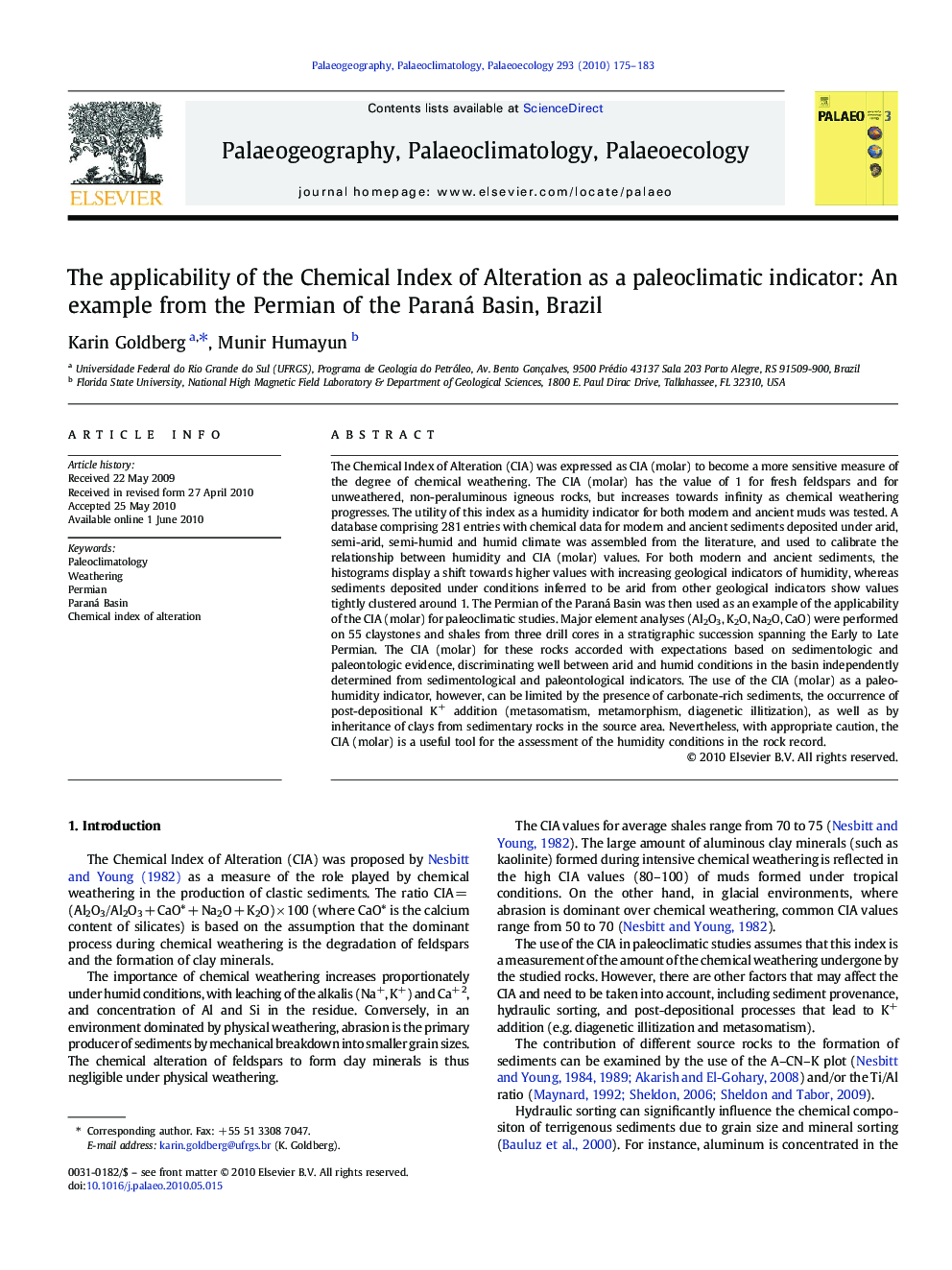| کد مقاله | کد نشریه | سال انتشار | مقاله انگلیسی | نسخه تمام متن |
|---|---|---|---|---|
| 4467534 | 1622276 | 2010 | 9 صفحه PDF | دانلود رایگان |
عنوان انگلیسی مقاله ISI
The applicability of the Chemical Index of Alteration as a paleoclimatic indicator: An example from the Permian of the Paraná Basin, Brazil
دانلود مقاله + سفارش ترجمه
دانلود مقاله ISI انگلیسی
رایگان برای ایرانیان
کلمات کلیدی
موضوعات مرتبط
مهندسی و علوم پایه
علوم زمین و سیارات
فرآیندهای سطح زمین
پیش نمایش صفحه اول مقاله

چکیده انگلیسی
The Chemical Index of Alteration (CIA) was expressed as CIA (molar) to become a more sensitive measure of the degree of chemical weathering. The CIA (molar) has the value of 1 for fresh feldspars and for unweathered, non-peraluminous igneous rocks, but increases towards infinity as chemical weathering progresses. The utility of this index as a humidity indicator for both modern and ancient muds was tested. A database comprising 281 entries with chemical data for modern and ancient sediments deposited under arid, semi-arid, semi-humid and humid climate was assembled from the literature, and used to calibrate the relationship between humidity and CIA (molar) values. For both modern and ancient sediments, the histograms display a shift towards higher values with increasing geological indicators of humidity, whereas sediments deposited under conditions inferred to be arid from other geological indicators show values tightly clustered around 1. The Permian of the Paraná Basin was then used as an example of the applicability of the CIA (molar) for paleoclimatic studies. Major element analyses (Al2O3, K2O, Na2O, CaO) were performed on 55 claystones and shales from three drill cores in a stratigraphic succession spanning the Early to Late Permian. The CIA (molar) for these rocks accorded with expectations based on sedimentologic and paleontologic evidence, discriminating well between arid and humid conditions in the basin independently determined from sedimentological and paleontological indicators. The use of the CIA (molar) as a paleo-humidity indicator, however, can be limited by the presence of carbonate-rich sediments, the occurrence of post-depositional K+ addition (metasomatism, metamorphism, diagenetic illitization), as well as by inheritance of clays from sedimentary rocks in the source area. Nevertheless, with appropriate caution, the CIA (molar) is a useful tool for the assessment of the humidity conditions in the rock record.
ناشر
Database: Elsevier - ScienceDirect (ساینس دایرکت)
Journal: Palaeogeography, Palaeoclimatology, Palaeoecology - Volume 293, Issues 1â2, 1 July 2010, Pages 175-183
Journal: Palaeogeography, Palaeoclimatology, Palaeoecology - Volume 293, Issues 1â2, 1 July 2010, Pages 175-183
نویسندگان
Karin Goldberg, Munir Humayun,